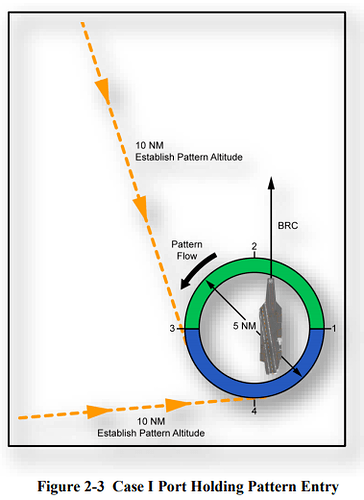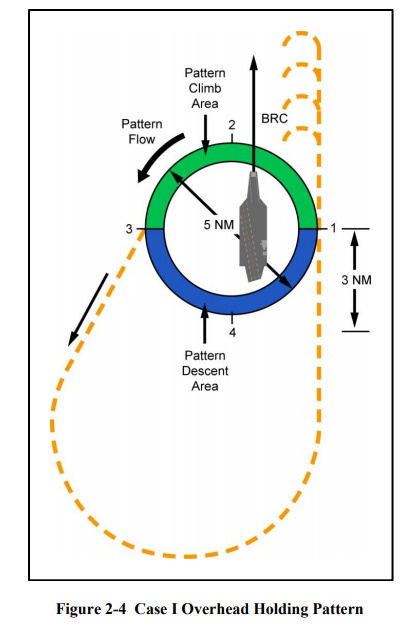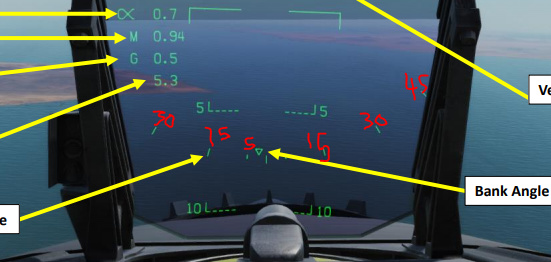So I want to try out a bit more procedural flying in the Hornet (will the fun just ever start!), and am enjoying reading the surprisingly readable Naval Air Training Command CV Procedures as part of my braining up on the LSO script new bits on ‘the stack’ here.
One question I have is around the fact that I obviously have to fly a reliable distance from the Carriers TACAN, so for the ‘Stack’ at 5 NM DME in my assigned altitude. Here’s the diagram of entering the pattern:
So it makes sense, in that hold like this:
I descend in the dark blue bits and exit the pattern at point ‘3’ at about 210 degrees off the Base Recovery Course (BRC) of mother. That I can do, I just need to remember to drop down to the next level in the stack in behind the carrier at each interval as others leave the stack.
Q1. What I’m not sure about is what sort of turn rate or things should I be monitoring to make sure I am in that circular 5 NM pattern? Is there a ‘standard turn’ bank indicator in the Hornet I should be using? I can use the distance measure value in the HSI for the 5 NM bit and eyeball where the TACAN is (or just look out the window), I just want to make sure I’m not missing anything just trying to manually circle the ship properly. As I understand it point ‘1’ on the diagram is over the ship, and this is a Port pattern, right?
Q2. The docs talk about maintaining ‘Max Conserve Fuel Flow’ while marshaling. What’s that for the Hornet, or is that in some MFD page that isn’t done yet? What is a good rough value for this, 300 KTs? I understand that when in the pattern I need to maintain distance, i.e. 180 with 2 of us etc so will speed up/down, but more just for idling in the stack then what is good?
Q3. If someone waves off / bolters, are they in priority if someone else is entering the pattern? As in if I get a ‘Charlie’ call from the stack at 2000 ft, I’m heading 210 off BRC, down to 800 ft heading away and someone bolters then do I ‘Spin’, as in climb to 1,200 ft and just circle in the pattern (above their 600 ft I guess) until numbnuts finally gets a hook? Don’t they ever have to spin or is it loser first?
Thanks for any help or insight. I do enjoy these bits.



